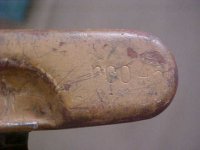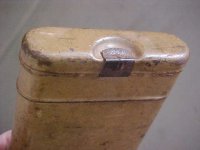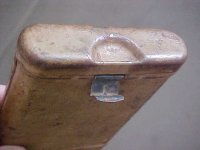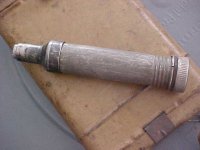Hit the local swapper this morning. First goodie to turn up was this RG34. Seller said his father, a WW2 U.S. Army Vet, had brought it back from the ETO after the war. Code is rco45 with tin painted tan. Inside were the contents shown...sheet-steel oiler, (which looks like it has a phosphate finish on the hull, and bottom cap "in the white"), twisted wire chain, both brushes (with the addition of old fishing-lure swivel clips attached to the hooks) and two ancient, oil-soaked pieces of heavy flannel. Sadly no spoon, but for $40. no complaints here...
Attachments
Last edited:










